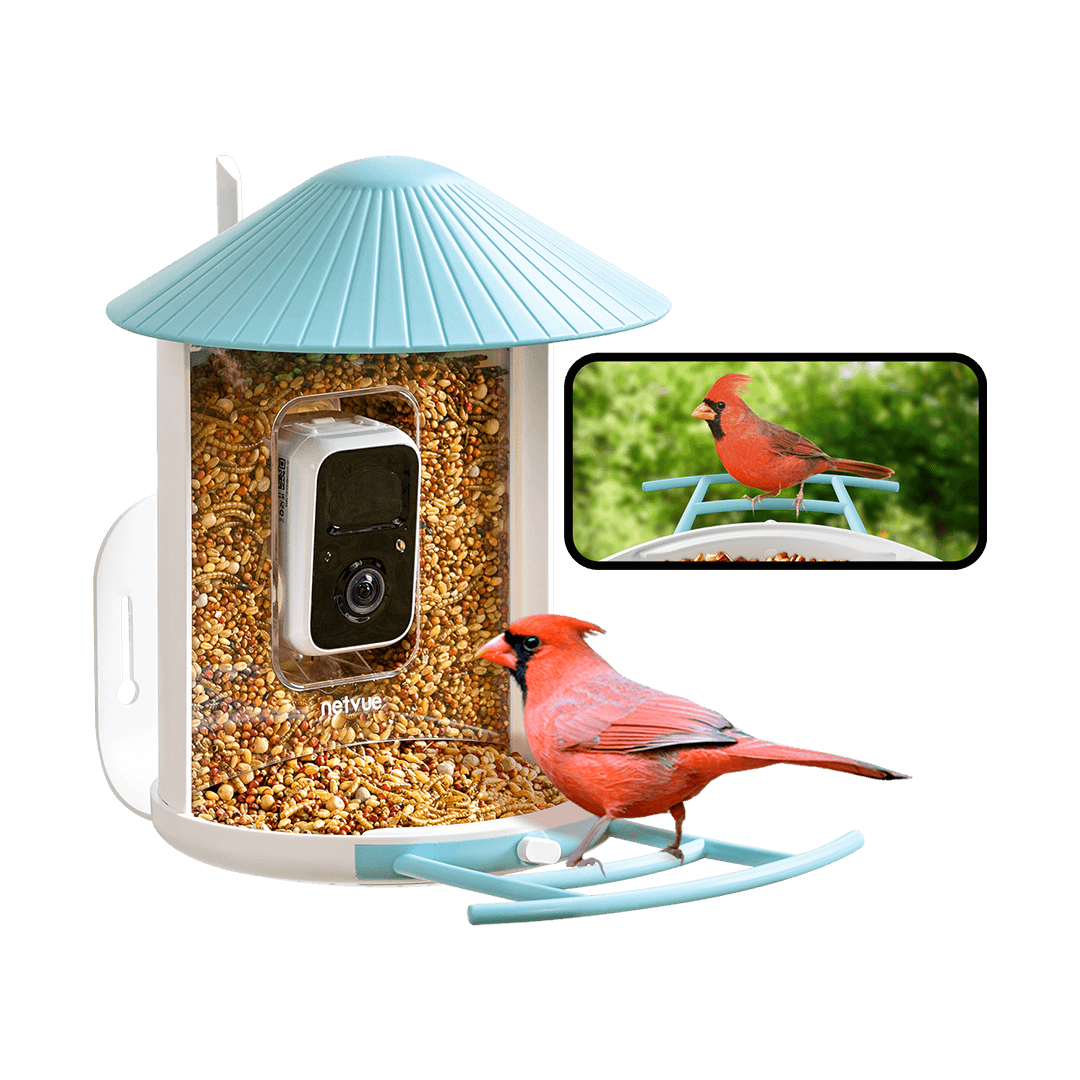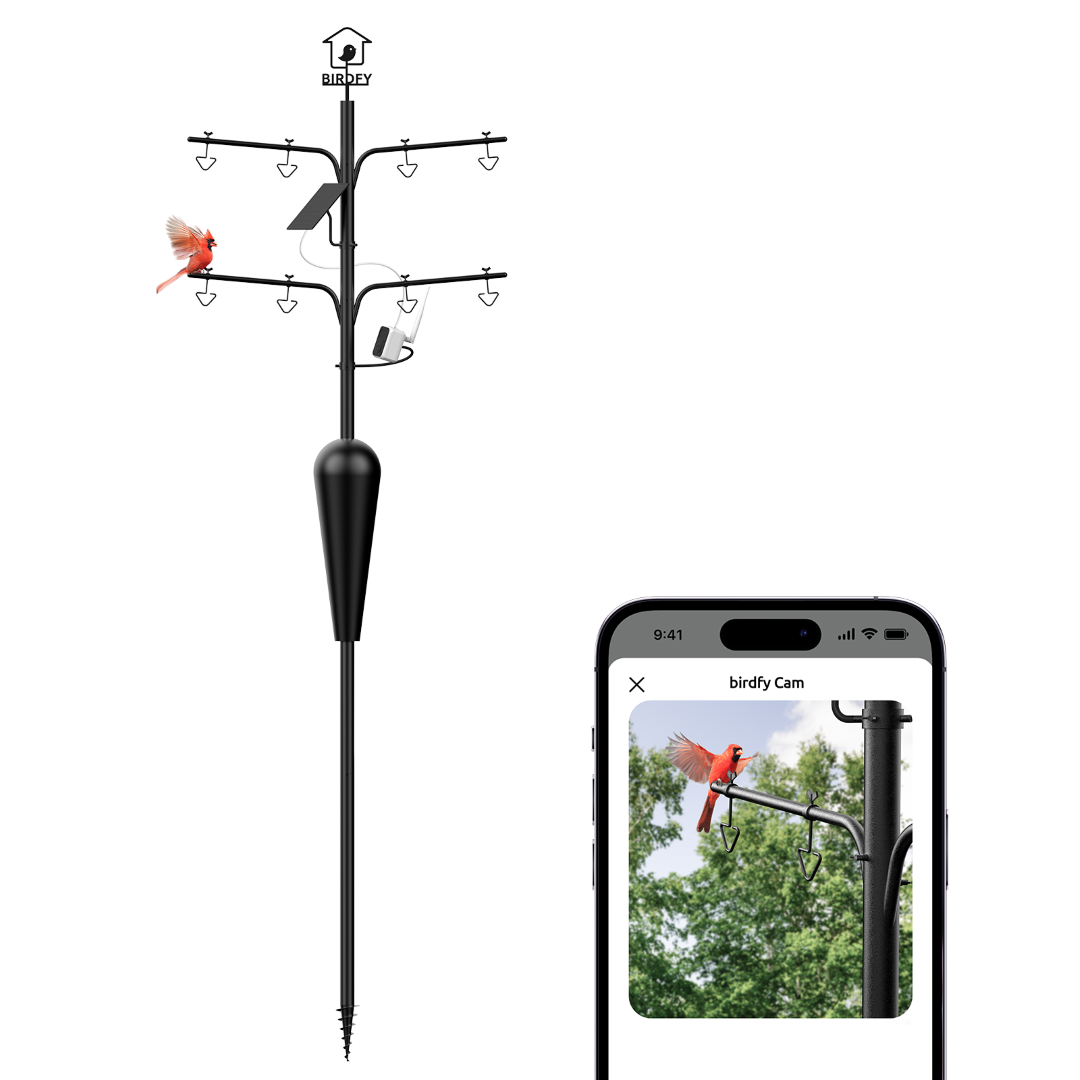Do Birds Fly at Night?
During the day, birds can often be seen flying. Lift your head and a small bird may cross the sky. But have you ever thought of a question: do birds fly at night? This blog can help you find the answer.
1. Is It Normal for Birds to Fly at Night?
It is common for birds to fly at night, especially nocturnal or migratory birds that fly at night to avoid predators or to take advantage of cooler temperatures. However, if you observe a bird flying at night and it is not a bird known for its nocturnal activity or migration, it may be flying at night under unusual circumstances, such as disturbance damage from a habitat or being confused by artificial lights.

2. Are Some Birds Active at Night?
Yes, some birds do move around at night. These birds, known as nocturnal birds, have adapted to be active at night. They have special features that allow them to navigate, hunt and communicate effectively in low light conditions.
Relative to their size, nocturnal birds usually have large eyes, which allow them to collect as much light as possible. This adaptation enhances their ability to see in the dark. In addition, many nocturnal birds have good hearing, which helps them find prey and communicate with other birds in the dark.
Common nocturnal birds include owls, known for their nocturnal hunting abilities, and night jays, known for their distinctive nocturnal calls. Other examples include nighthawks, as well as certain species of ducks and seabirds, which may be active at night for a variety of reasons such as foraging or migration.
3. What is the Name of the Bird That Flies in the Night?
Nocturnal birds
Nocturnal birds are birds that are primarily active at night. They have evolved unique adaptations that allow them to navigate, feed and communicate effectively in low light conditions. Examples of nocturnal birds include
Owls
Owls are probably the most iconic nocturnal bird. They have large eyes that collect as much light as possible, allowing them to see in the dark. They also have distinctive feathers that allow for silent flight, which helps them hunt nocturnal prey such as rodents and insects.


Nighthawk
Nighthawks are a group of birds in the nightingale family known for their aerial acrobatics and nocturnal hunting behavior. They have long wings and streamlined bodies, which allow them to fly quickly through the air at dusk and dawn to catch insects on the wing.

Nightjar
The nightjar is a medium-sized bird known for its distinctive call and diurnal habits. They have cryptic plumage, which helps them blend into their surroundings during the day and rely on their excellent camouflage and aerial agility to catch flying insects at night.

Crepuscular Birds
Diurnal behavior refers to the activity patterns of birds that are most active at dawn and dusk (the transition between night and day). These birds have adapted to take advantage of low light conditions and food availability during these times. Diurnal behavior allows these birds to avoid competition with diurnal birds while still taking advantage of available resources. Diurnal birds include

Hummingbirds are primarily diurnal, which means they are active during the day and usually rest at night. While most hummingbirds do not fly at night, they are occasionally active in the early morning or late afternoon, especially during migration or in response to changing environmental conditions.
Allen's Hummingbirds
During migration, these hummingbirds make nocturnal flights, especially when crossing large bodies of water or mountains. They may also fly early in the morning or late in the evening to avoid the heat or to take advantage of tailwinds.

White-Eared Hummingbird
White-eared hummingbirds are found in parts of Mexico and Central America and have been observed flying at night, especially during the breeding season. Although the reason for this behavior is not fully understood, it may be related to foraging for nectar resources or making territorial displays.
American Woodpecker
Woodpeckers are known for their elaborate courtship displays, which usually take place at dawn and dusk. Their long, pointed beaks are adapted for searching the soil for earthworms, which are their main food source.
Black-crowned Night-Heron
These birds often forage along the water's edge at dawn and dusk. They use their long bills to catch fish, frogs, and other aquatic prey in dim light.

4. Do All Birds Sleep While Flying?
No, not all birds sleep while flying. While some birds are somewhat adapted to resting or sleeping while flying, this is not a common behavior in most birds. In fact, the vast majority of birds do not sleep while flying. Most birds need to rest and sleep on a regular basis, and they usually do so by roosting or nesting in a safe place such as a tree, shrub, or on the ground. During these rest periods, birds may close their eyes and go to sleep, although they usually remain alert to potential threats.
However, certain species of birds enter a state of "unihemispheric slow wave sleep" (USWS) while flying. Birds capable of USWS include certain species of seabirds, such as albatrosses and frigatebirds, which migrate long distances across the ocean and may fly for days or even weeks at a time. This sleep allows one hemisphere of the bird's brain to rest while the other remains awake and alert. This allows them to maintain control of their flight and react to any potential danger.


5. What Are the Flight Habits of Common Backyard Birds?
American Robin
Robins are also diurnal birds and are most active during the day. They are often seen flying early in the morning as they leave their overnight roosts to forage for worms, insects, and berries. Robins may fly intermittently during the day as they move between foraging areas, defend territories, and interact with other birds.
Although robins are capable of sustained flight, they generally prefer short, straight flights interspersed with brief glides between wingbeats. Over time, robin flight may become less active, especially during the hottest part of the day in the middle of the day, and they may seek shade in trees or bushes to rest.
Blue jay
Blue jays are diurnal birds, which means they are primarily active during the day. Blue jays fly powerfully and directly, characterized by steady wingbeats and occasional gliding. They are adept fliers, able to fly at varying altitudes, from low foraging to high altitude, traveling between areas. Blue jays usually roost in trees at night and are relatively inactive until the next morning when they resume flight activity.
Northern Cardinals
Cardinals are diurnal birds, which means they are primarily active during the day. They often fly early in the morning and late in the evening, especially when traveling between foraging areas, roosts, and nesting sites. Cardinals are known for frequently flying short distances within their territories, especially when foraging for seeds, fruits, and insects.
Although cardinals may fly short distances throughout the day, their flight activity tends to peak in the morning and evening when they are most active in searching for food and engaging in territorial behavior. Cardinals usually roost in trees or bushes at night, where they are relatively inactive, and do not resume flight activity until the following morning.

6. Implications and Conservation
Understanding the behavior of birds at night is critical to effective conservation efforts because many birds, both nocturnal and diurnal, play important roles in their ecosystems.Here's some conservation strategies.
Habitat Protection and Restoration
Protecting and restoring habitats critical to nocturnal and diurnal birds is essential to their conservation. This includes protecting natural areas, creating wildlife corridors, and implementing sustainable land management practices.
Reduce Light Pollution
Implementing measures to reduce light pollution, such as using shielded outdoor lighting, turning off unnecessary lights, and enforcing lighting ordinances in urban areas, can help mitigate the impacts of light pollution on nocturnal and crepuscular nocturnal birds.
Education and Outreach
Increasing public awareness of the importance of and threats to nocturnal and crepuscular nightjars can build support for conservation efforts. Educational programs, signage, and outreach activities can help engage communities in conservation actions.
Research and Monitoring
Research on the ecology, behavior, and population trends of nocturnal and crepuscular nocturnal birds is essential for developing conservation strategies and monitoring the effectiveness of long-term conservation actions.


7. Conclusion
The blog begins by discussing the normalcy of nocturnal flight and attributes it to evolutionary strategies such as predator avoidance and thermal regulation. In addition, the article discusses birds with diurnal habits, such as herons and woodpeckers, mentioning their adaptations to low-light conditions at dawn and dusk. The article also emphasizes the importance of habitat protection, light pollution reduction, public education, and ongoing research and monitoring efforts. These strategies are essential to the conservation of various bird populations and their ecological contributions.






